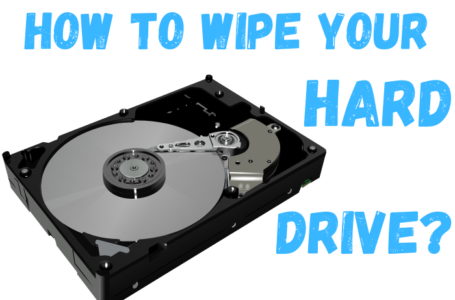
Ear infections are common in children, and adults can get them too. There are a few ways to drain fluid from the middle ear, but doing it at home is often the most convenient. This article will teach you how to do it safely and effectively. I hope you never need it, but if you do – now you know!
What Is Middle Ear Fluid, and Why Do You Need To Drain It
There are many benefits to draining fluid from the middle ear at home. First, it can help to improve hearing. When there is fluid in the middle ear, it can muffle sounds and make it difficult to hear clearly. Draining the fluid can help to restore normal hearing.
Second, draining fluid from the middle ear can help to prevent infections. Fluid in the middle ear provides a breeding ground for bacteria and viruses and can lead to ear infections. Draining the juice can help to reduce the risk of disease.
Third, draining fluid from the middle ear can help to relieve pressure and pain. Fluid buildup in the middle ear can cause anxiety and pain, which can be reduced by draining the fluid.
Fourth, draining fluid from the middle ear can help to improve balance. Fluid in the inner ear helps to maintain balance, but too much liquid can cause dizziness and unsteadiness. Draining excess fluid can help to improve balance and reduce dizziness.
Finally, draining fluid from the middle ear can help to improve speech development. When there is too much fluid in the middle ear, it can interfere with speech development in children. Draining the fluid can help to ensure that children reach their full potential for speech development.
There are many reasons why you might need to drain fluid from your middle ear at home. Doing so can offer many benefits, including improved hearing, prevention of infections, relief of pressure and pain, improved balance, and improved speech development. If you think you might benefit from draining your middle ear at home, talk to your doctor about whether it is right for you.
How to drain fluid from middle ear at home
One common cause of ear pain is an accumulation of fluid in the middle ear. This condition, known as otitis media, often occurs when the Eustachian tube becomes blocked. The Eustachian tube is a small passageway that connects the middle ear to the back of the throat. When it is functioning properly, the Eustachian tube helps to equalize the pressure in the middle ear and drain away any fluid. However, when the tube is blocked, fluid can build up and cause pain.
There are several effective ways to drain fluid from the middle ear at home. One simple method is to chew gum or eat hard candy. This action will help to open the Eustachian tube and allow fluid to drain out. Another effective way to clear fluid from the middle ear is to take a hot shower. The steam from the shower will help to open the Eustachian tube and allow fluid to escape.
If you are experiencing persistent ear pain, it is important to see a doctor. However, for occasional episodes of otitis media, these simple home remedies can be quite effective in relieving pain and restoring normal hearing.
What Are the Risks and Side Effects of Draining Fluid From Middle Ear at Home
In some cases, your doctor may recommend draining the fluid from your middle ear at home. This involves placing a small tube in your ear and suctioning out the fluid. While this procedure is generally safe, there are some risks and side effects to be aware of. The most common side effect is pain or discomfort in the ear. There is also a risk of infection, bleeding, or damage to the eardrum. If you are considering draining fluid from your middle ear at home, be sure to talk to your doctor first to weigh the risks and benefits.
How Often Should You Drain Fluid From Your Middle Ear
One common question people have about their health is how often they should drain fluid from their middle ear. The simple answer is that it depends on the individual’s situation. For some people, it may be necessary to drain fluid from their middle ear on a daily basis, while others may only need to do it once a week or so. It is important to consult with a healthcare professional to determine how often you should drain fluid from your middle ear, as there are several factors that can affect the frequency, including the severity of your symptoms and the underlying cause of the fluid buildup. However, in general, draining fluid from your middle ear at home is a safe and effective way to relieve symptoms and prevent further complications
Are There Any Other Ways To Drain Fluid From Your Middle Ear
Some home remedies may help drain fluid from your middle ear. These methods are not proven to be effective and should only be used as a last resort after you have tried other methods, such as medication and decongestants. One method is to place a warm towel over your ear for five minutes several times a day. You can also try placing a warm washcloth over your ear and tilting your head to the side to allow the fluid to drain out. Another option is to lie down with a pillow under your head and let gravity do its work. If you have any pain, dizziness, or nausea, stop using these methods and see your doctor.
How Can You Prevent Fluid Buildup in Your Middle Ear
Fluid buildup in the middle ear is a common problem, especially for children. The middle ear is connected to the throat by a small passageway called the eustachian tube. When this passageway becomes blocked, fluid can build up in the middle ear, causing pain and pressure. There are several things you can do at home to help drain fluid from the middle ear and relieve symptoms. First, try yawning or swallowing several times. This action opens the eustachian tube and allows fluid to drain out. You can also use a special device called a vent, which gently blows air into the nose and forces the eustachian tube to open. Finally, over-the-counter decongestants may also be helpful in reducing congestion and allowing fluid to drain more easily. By taking these simple steps, you can help to prevent fluid buildup in your middle ear and keep your ears healthy and comfortable.
Conclusion:
If you are experiencing pain or pressure in your ears, drainage may be the answer. Follow these simple steps to drain fluid from the middle ear at home and relieve some of that discomfort. Remember to always consult with a doctor if the issue persists or worsens. Have you ever drained fluid from your middle ear? What was your experience like?










